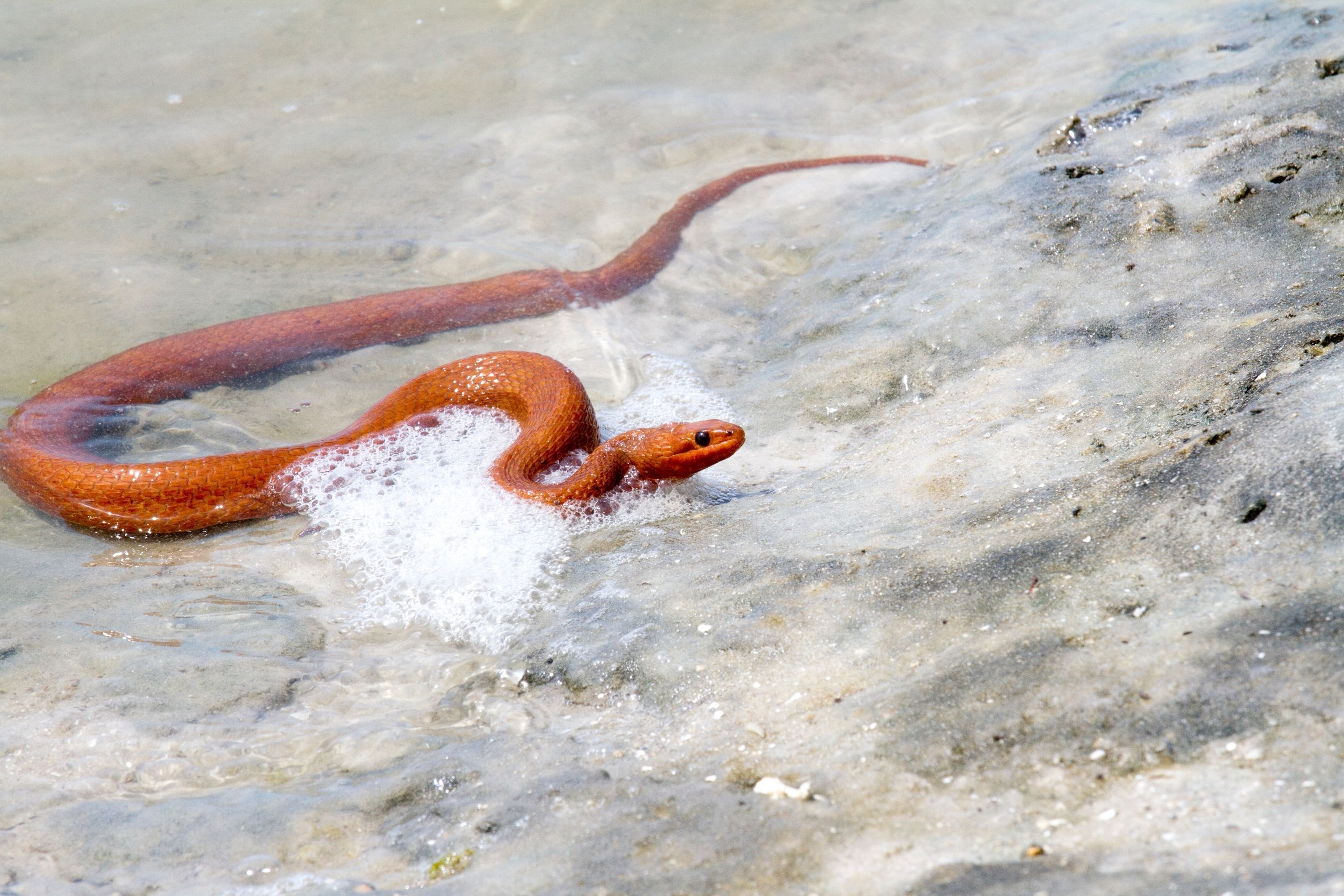Salt marsh snake
(Nerodia clarkii)

Description
Nerodia clarkii, commonly known as the salt marsh snake, is a species of semiaquatic, nonvenomous, colubrid snake found in the southeastern United States, in the brackish salt marshes along the Gulf of Mexico from Florida to Texas, with a population in northern Cuba. Salt marsh snakes grow to a total length of 15 inches (38 cm) to 30 inches (76 cm), and are highly variable in pattern and coloration. Populations of the Gulf salt marsh snake (N. c. clarkii) from the vicinity of Corpus Christi, Texas, to the Gulf Hammock region of Florida are gray, tan or yellow with four brown to black longitudinal stripes. Populations in Florida from Tampa Bay south to Miami and northward along the Atlantic coast to the vicinity of Cape Canaveral are referred to as the mangrove salt marsh snake (N. c. compressicauda). This subspecies exhibits many colors and patterns and can be gray, green, or tan with darker banding or may even be solid reddish orange or straw yellow. A third subspecies, the Atlantic salt marsh snake (N. c. taeniata), is restricted to a small stretch of coastline in Volusia and Indian River Counties, Florida. This race is smaller than the other two and has a color pattern of four dark stripes on the neck which are replaced by a series of dark blotches or bands on the posterior portion of the snake's body. It is currently listed as a Threatened Species by the US Fish and Wildlife Service. Some sources consider the three races of N. clarkii to be subspecies of the southern water snake, Nerodia fasciata. Others consider not only the three races of N. clarkii, but also the species N. fasciata itself, all to be subspecies of N. sipedon.
Taxonomic tree:







